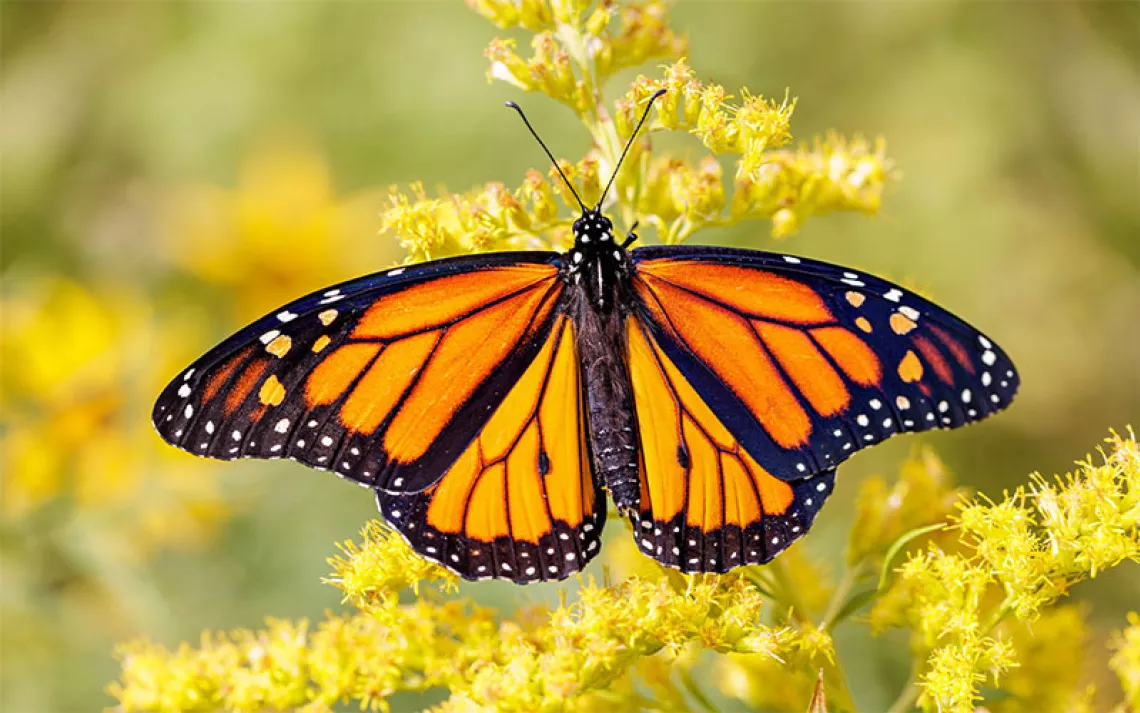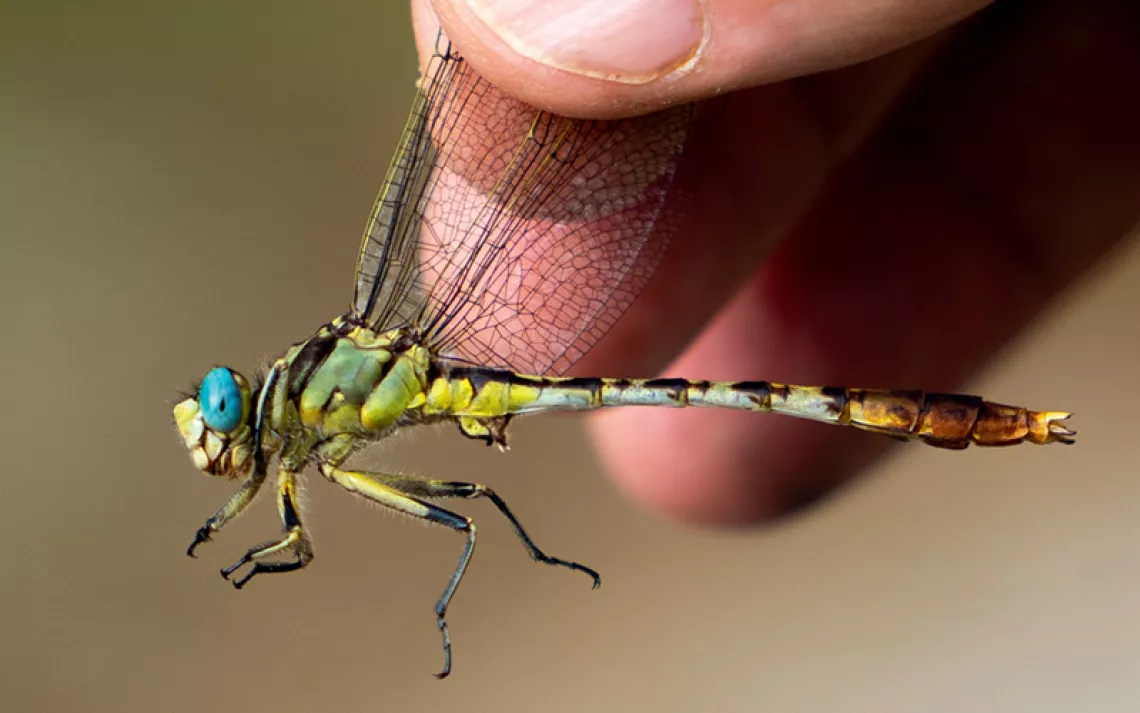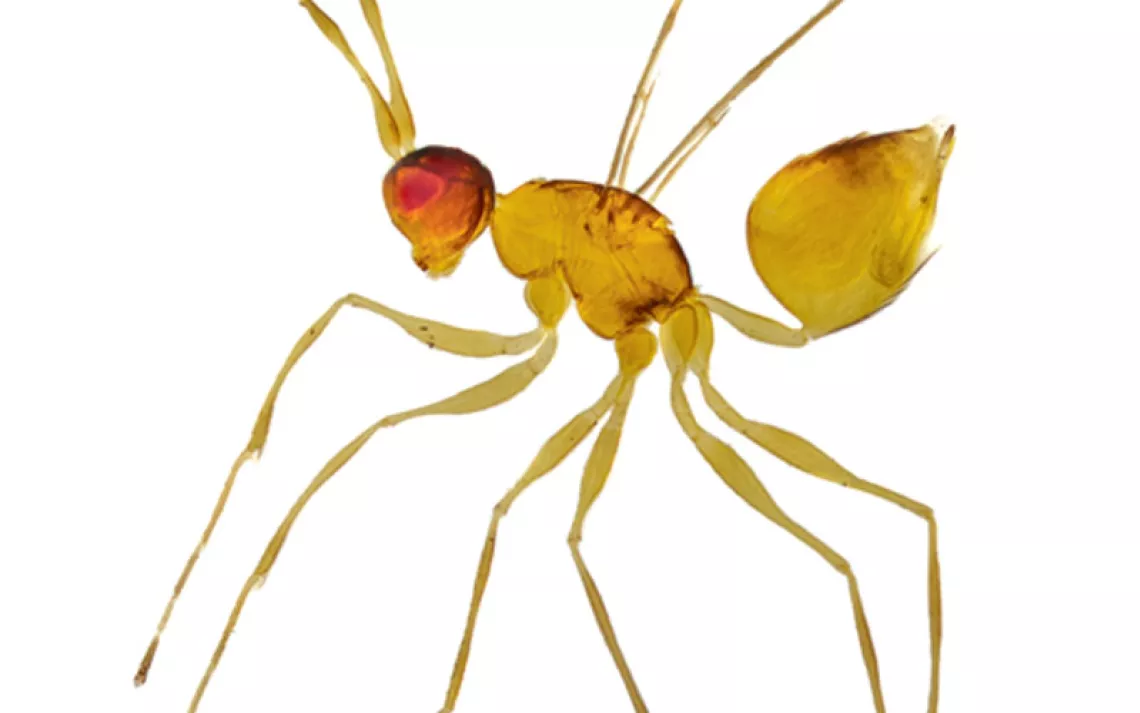Endangered? Who Cares?
They suck blood, spread disease, eat their mates, and inspire great horror films. But insects need protection—maybe even a little love.
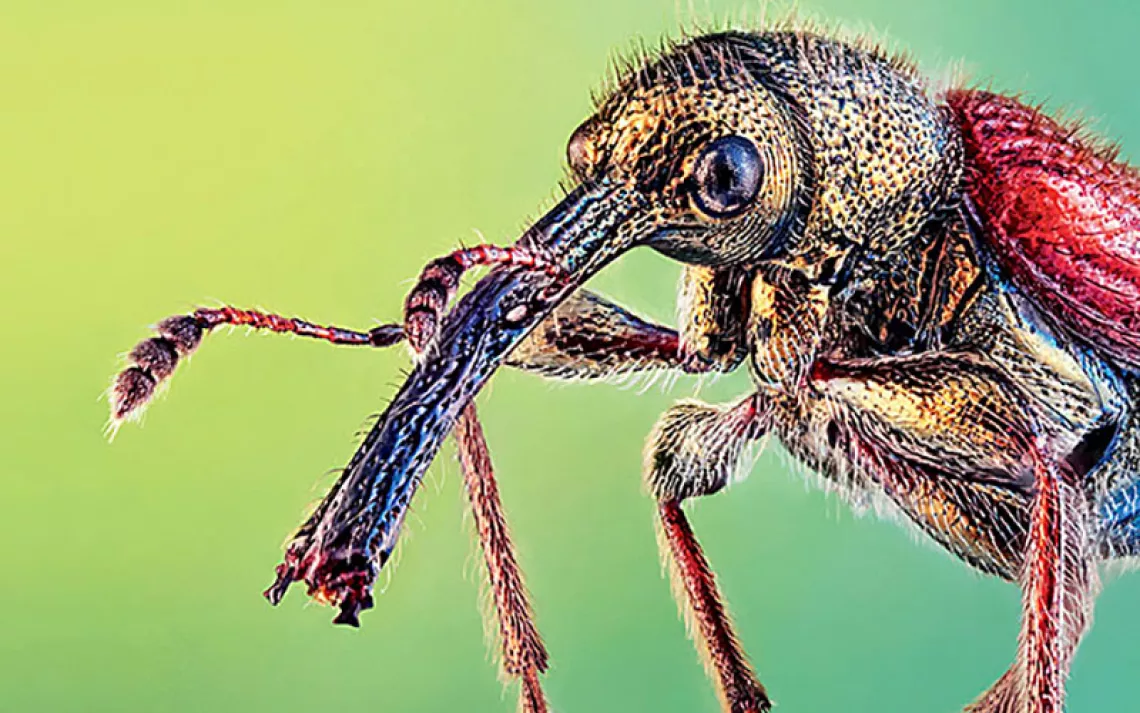
LEAF-ROLLING WEEVIL (NEOCOENORRHINUS AEQUATUS): The beetle uses its long legs and longer snout to partly cut a leaf and roll it into a fat cigar, then lays an egg in the middle. While this species is attached to a common plant, its relatives, which feed on rare plants, face ever-increasing isolation and decline.
|Photography by John Hallmén (Barcroft/Fame Pictures)
If insects weren't so small, they'd be the most terrifying creatures on Earth. Director Ridley Scott knew this well, and so leaned heavily on the imagery and behavior of bugs when conceiving the bloodthirsty, parasitic, shiny, armored extraterrestrials that were the horrific centerpiece of his movie Alien.
Unfortunately for insects, they are very small, and many people think they are terrifying enough already. With a history of attacking our food, our homes, our bodies, and our very civilization, bugs are rarely regarded in a favorable light. So if some bright-spark entomologist announces that California's delta green ground beetle (Elaphrus viridis) is critically endangered or that the yellow-sided clubtail (Stylurus potulentus) is vulnerable in its diminishing Florida Panhandle refuge, it's easy to shrug and ask, "Who cares?"

ANT (FORMICA SPECIES), left: When ant meets ant, they use their mobile, whiplike antennae to smell and feel each other. Fellow colony members are welcomed; aliens face the fierce jaws. CRANE FLY (TIPULA FAMILY), right: No longer appearing as just a gantry of long legs, the crane fly has a handsome head covered with well-groomed sensory hairs, and its domed compound eyes show the individual facets.
Throughout the world, massive conservation schemes revolve around flagship species—tigers, pandas, gorillas, orangutans, whales, dolphins, turtles. Nearly all of them are large, graceful, and theoretically cuddly. In comparison, the insect as a worthy conservation project is a hard sell. There is no doubt that charismatic species help focus attention on the dangers of poaching, habitat destruction, pollution, and general environmental degradation, but plenty of areas in need of protection lack photogenic creatures to decorate a press release or inspire donors. Every habitat, however, has bugs.

Sign up to receive Sierra News & Views
Get articles like this one sent directly to your inbox weekly.
With this action you affirm you want to receive Sierra Club communications and may vote on policy designated by the Sierra Club Board.
The power of insects is not in the puny individual but in the wonder of their combined masses. The insect class is mind-numbingly diverse. Experts can't agree on whether there are 3 million, 30 million, or maybe even 80 million insect species out there (compared with only 5,400 mammal species worldwide). They have identified and cataloged fewer than 1 million so far.
Even within an individual species, the sheer numbers are staggering. The termite population in a tropical rainforest has a greater biomass per acre than the wildebeest herds on the Serengeti. Insects have colonized every conceivable ecological niche from the mountaintop to the seashore. They predominate in the middle sections of virtually every terrestrial food chain. They eat, and are eaten, by the untold billions of tons.
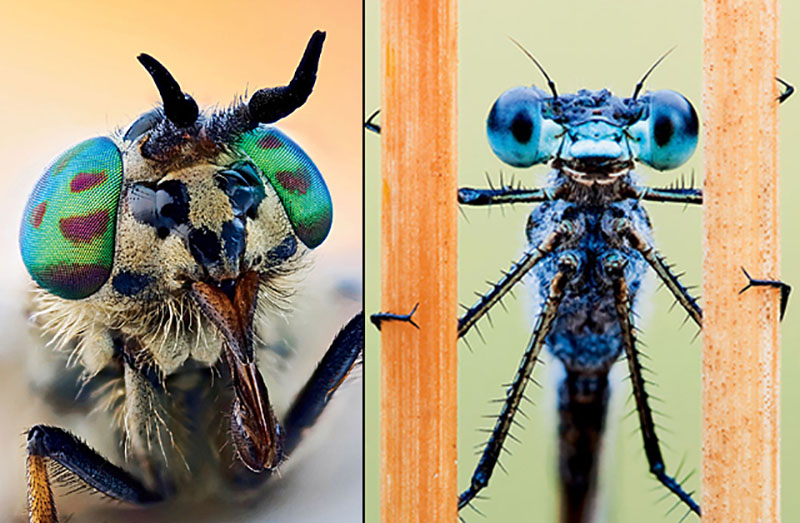
DEER FLY (CHRYSOPS SPECIES), left: The sharp, stout mouth houses even sharper biting stylets to pierce the skin and suck the blood of humans as well as deer. The deer fly's beautiful striped or flecked eyes are still a mystery to entomologists. DAMSELFLY (ZYGOPTERA SUBORDER), right: Though it looks fragile, the damselfly is a killer. Its legs are covered in projecting bristles used to trap airborne prey and deliver it up to the powerful mandibles. Their aquatic larvae are sensitive to water pollution.
Why is it, then, that insects are so poorly understood, so unappreciated, so unloved? Mostly, it's a size thing. A few brightly colored butterflies catch our attention, but they represent a tiny minority. Most insects are minuscule, even microscopic. They are also secretive, evasive, and often inextricably attached to microhabitats, like a single rare plant species deep in the jungle or a particular salt-defined zone on the Florida Keys. The truth is, most insects shun humans, and we hardly ever get to see them. Even if we do, they are mostly small and dark—specks of animated nothing.
This is where close-up photos like these by John Hallmen come in. Under a lens or even a simple magnifying glass, insects are revealed as bizarre in the extreme. Some might even call them beautiful. Hallmen's carefully lit, crisply focused, regal portraits show insects to their best advantage. Their shining surfaces are corrugated and dimpled, like beaten metal. Their diaphanous wings glint with the rainbow colors of light through a gemstone. Their bodies, no longer appearing feeble and frail, are revealed as bold, handsome, statuesque.
The fine bristles on a damselfly's legs are honed spines that it angles to make a precise and deadly prey-catching basket used to scoop a smaller flying critter into its crushing mandibles. The delicate waist of a parasitoid fly gives it the flexibility to lunge and stab with its bulbous abdomen and to lay an egg quickly and easily in the body of its bumblebee host. The hover fly's long snout houses the even-longer articulated proboscis with which it sucks nectar from the deep, tubular flowers of bugleweed and mint.
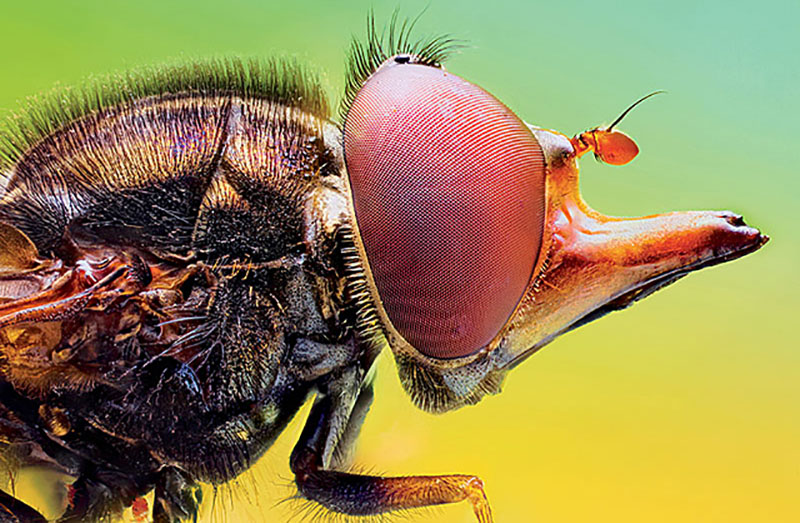
HOVER FLY (RHINGIA SPECIES): The long, conical snout houses a delicate elbowed tongue, allowing the fly to reach into the deep, tubular flowers of mint, rosemary, lavender, and thyme. Hover flies are relatively well-studied insects, but their life histories are still poorly understood. Unfortunately, their all-too-frequent absences are a good indicator of habitat destruction.
Form, however, is only one aspect of insects' beauty. Their behavior is as fascinating as it is dark. Complex courtships can last hours. Their stalking and hunting can be as dramatic as any cheetah kill. Camouflage and stillness render some invisible, while others warn of venomous stings or bodily poisons with bright colors. Their complex interactions with each other, with the plants they eat, and with the birds and animals that prey on them make insects excellent yardsticks for researchers investigating the health of almost any environment.
In fact, once the difficulties of identifying tiny animals are sorted out, studying insects is often the quickest way to assess a habitat's state. Their diversity (or lack of it) can tell us if water is polluted, if ancient forests have an adequate balance of decaying timber, or if a restored prairie has a rich-enough mosaic of wildflowers.
As it turns out, the delta green ground beetle and the yellow-sided clubtail are probably relatively safe. Both are restricted geographically: the ground beetle to Solano County in California and the clubtail to a few rivers in Mississippi and Florida. It's a different story for the American burying beetle (Nicrophorus americanus). Once widespread across the eastern United States and southern Canada, the beetle has undergone catastrophic population decline since the 1920s and is now found only in scattered colonies around the edge of its former range. It gets its name from its habit of finding and burying small animal corpses. Once the carrion is buried, the beetle lays its eggs and the grubs feed on the putrefying flesh. (Oh dear, there's that alienating behavior again.)
A key factor in the beetle's ill fortune has been habitat fragmentation—from road building, urban expansion, and intensive agriculture. As its range has been balkanized, the beetle hasn't been able to compete with edge-dwelling scavengers like skunks and racoons. This is a large, handsome (but tragically uncharismatic) insect, and it's heading the way of the passenger pigeon, Caribbean monk seal, and Steller's sea cow. Can humans step in to halt its fall? Who can do this? Who cares?
 The Magazine of The Sierra Club
The Magazine of The Sierra Club
